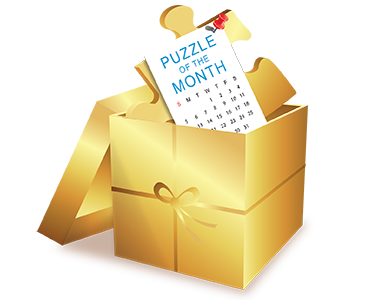Jigsaw Puzzle Tips & Tricks
Jigsaw Puzzle Strategies, Tips, and Hints: A Guide to Becoming a Puzzle Expert
At any time of year it’s good to have some ideas for family activities that are inexpensive, screen-free, and indoor-oriented for sudden rainy days. Jigsaw puzzles are a great alternative to hours of television or video games. But if you’re new to puzzles, or your puzzle strategies aren’t working out as you’d hoped and you’re looking for some more tricks, here is our guide to some jigsaw puzzle tips and hints to help you assemble puzzles like a pro.
Before You Start
1. Choose a puzzle
• Seems obvious, right? But sometimes we’re drawn to the 3000 piece jigsaw puzzles when our skill level might actually be somewhere around 500 pieces. And that’s okay! Our brains like challenges, but not impossible ones! Build up your skill level first before tackling expert-level puzzles. It’ll make it more enjoyable along the way and deter you from abandoning your puzzle halfway through.
2. Have an end plan
• What do you plan to do with your puzzle afterward? If it’s going to be disassembled and put back in the box, you require less planning than if you are going to glue and frame your puzzle.
• If you do glue and mount, learn about gluing jigsaw puzzles before you start. Gluing puzzles can be messy, so if this is your end plan, work your puzzle out on a surface you don’t mind getting sticky, like a piece of cardboard (but make sure it’s big enough to hold your entire puzzle—you can check the dimensions on the box) or a roll-up puzzle mat. Wax paper is great for keeping the sticky mess to a minimum.
• We have some great storage options for jigsaw puzzles - from mats that you can roll up to entire cases that keep all your pieces flat and in place. The cases even come with sorting trays and some are made with felt to create the perfect work surface for assembling your puzzle.
3. Choose a workspace
• Workspaces that have another function (like a dining room table) are fine if you have a puzzle mat or a piece of cardboard or other portable surfaces that will allow you to move it if you need to make room.
• If your puzzling space is permanent, but you don’t like the clutter and don’t have a roll-up puzzle mat, plastic baggies or Tupperware containers for your pieces keep everything organized and ensure that you don’t misplace any pieces along the way.
• Make sure your workspace is large enough to accommodate the full size of the jigsaw puzzle, but also the extra pieces that you organize and build with as you go. 1000 piece puzzles are usually around 20" x 27", for example, so you'll need at least a 3-5 foot workspace to have room for the whole puzzle and loose pieces you're working on outside the edges. You can use sorting trays if you don't have the extra space for the loose pieces.
Starting Out
1. Flip all pieces upwards
• Having all your pieces facing the same way can be tedious, but it makes it so you’re working with the whole puzzle the whole time, and it’ll make the next steps faster.
2. Find all the edge pieces
• Constructing your border gives you a defined space that you’ll work inside as you build. Of course, this strategy only works for standard jigsaw puzzles that do have edges. If you've selected to have the added challenge of doing a puzzle with no edge pieces - you're out of luck here. If the border is all one color or pattern, you might have better luck starting on the inside of the jigsaw and doing the border pieces last.
3. Sort by color
• From here you can build recognized sections of the puzzle. For most puzzles, this part will be pretty easy because you can tell the difference between different shades or different areas of the puzzle by what color you see on the pieces. Some puzzles that have been deemed "impossible" have repeating patterns and colors all over, this will be harder. For these, you'll want to try to separate out colors that appear less often and also focus on the shape of the pieces.
• Pieces that have no dominant color should go in a miscellaneous pile that you’ll turn to when you’ve exhausted your main color-sort piles.
4. Special pieces
• Some pieces will be part of really distinguishing parts of the puzzle because it has text on it or a color that’s only in one spot. Keep those separate and build on them as you can. You might also find puzzle pieces that shaped a lot differently from the rest of the pieces - keep these separate because it will be easy to spot where it goes as you start assembling the puzzle. Some puzzles even have what are called whimsies, special shapes like people and animals - scattered throughout the rest of the regular jigsaw shapes.
Middle to End Work
1. Pay close attention to the shape
• Jigsaw puzzle pieces come in varying shapes with “ins” and “outs.” Sometimes it’s really obvious when pieces don’t fit together, and sometimes it will look like a perfect match but they don't belong. As you get familiar with the shapes, you’ll be able to visualize the negative space and recognize more quickly what pieces go where.
• If you want to sort even further, you can organize your pieces by color AND shape. If you were doing a puzzle with a blue sky, for instance, you’d continue separating all your blue pieces into piles of “2 ins” or “2 outs.” You’d then go searching for matching partners by visualizing the negative space.
2. Work on small sections at a time
• Instead of trying to work on the entire puzzle at once, it can be really helpful to work on small portions so that you’re accomplishing sections. This will help keep you motivated and you’ll have a visual record of your progress.
• Put these finished sections where they would be in the puzzle, even if it’s not connected to the edge pieces. You may connect to the edge sooner than you’d think, and visualizing the space around these sections may make it easy for you to find the pieces that will surround it.
3. Don’t give up
• When you’re tired or bored or your puzzle, take a break. Your puzzle should be fun, and sometimes too much time spent in one sitting can take away from that. A fresh look at it later may help you see things you missed, too!
• Once you’re finished with your puzzle, congratulate yourself! Think about challenging yourself with a more difficult puzzle next time around... maybe start working up to that 3000 piece jigsaw puzzle you’ve been eyeing. Practice and familiarity with jigsaw puzzles will develop your skills even faster.








